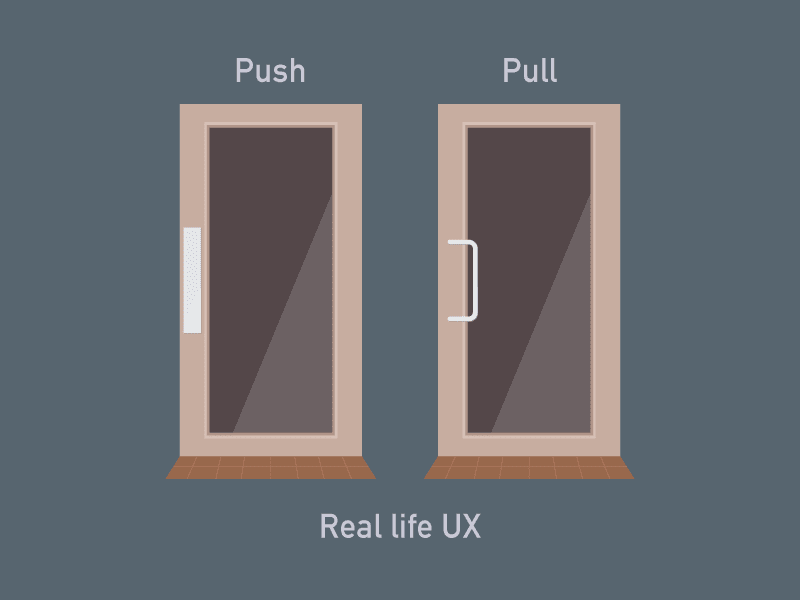User Experience is a matter of survival today. Learn what is UX, how to improve the user experience you deliver through your business and discover why you should care about it.
What is this User Experience?
User Experience, or UX, is the overall aspects of the user interaction to your company, services and products in terms of how easy and pleasing it is to consume. This is not related to the internet, but you can use User Experience in your favor applying its concepts to your website.
UX is everything. It always has been, but it’s undervalued and underinvested in. — Evan Williams, co-founder of Twitter
UX is not about the look.
User Experience is not how beautiful your product looks like. UX is about interaction. To have a good looking page is important, but if your user doesn’t know how to interact with your service, the shape of it doesn’t matter at all.
UX is not digital.
User Experience can be applied to digital services like websites and mobile apps. But it’s much more than that. User Experience, again, is about the interaction the user has with your business.
Have you ever pulled a door you should have pushed? That was not your fault. You were the user, and the door probably had a bad UX.
UX can grow your business.
88% of online shoppers are less likely to return to a site after a bad experience.
User Experience is to care about the user interaction. If your business is based on the user you should care about the experience he has when he consumes your services.
Improving the UX.
How does your user feels using your product? If the answer is negative, you have a big problem. When thinking about UX, you have to think about the user.
Ask the following questions to your product:
Does it work?
The product or service you are offering works? This is the first thing you want to fix. It has to be functional, rather than fancy or good looking.
If this is a web application, be sure that is fully functional and optimized in the web and in the mobile.
Is it fast?
90% of users reported they stopped using an app due to poor performance.
Users are impatient. If your product is slow compared to others, your user will leave. Users expect websites to load in 2 seconds or less. And they abandon the site or uninstall the app if it takes more than 4 seconds. I do that, and you probably also do without even knowing. UX is based on experiments and validation.
Is it accessible?
52% of users said that a bad mobile experience made them less likely to engage with a company.
The content you offer must be accessible to everyone within your target audience. Kids, blind people, young, elderly, Mac, PC, iOS, Android and more variations.
How hard is it to use?
79% of people who don’t like what they find on one site will go back and search for another site.
Users are stupid. Deliver to them a product that is easy to use. If it can’t be easy, so make it to be easy to learn how to use.
How is your product prepared for user mistakes?
Again, users are stupid. They will fail. That’s why Google has an autocorrection feature that everybody uses. Even your iPhone keyboard has this autocorrection feature.
Bonus: how does your product impact the user?
This is not a UX tip, it’s more a business one. Are your product or service solving a big or a small problem? That’s how you measure impact.
It’s about empathy. If you want to build user loyalty, solve a big problem he has.
Why I should care about?
If you make your user feel better using your product, the results will be clear. Users are expecting your website to provide a good experience. Again, it’s a matter of survival.
Just ask the hotel industry! Airbnb is trumping hotels by offering a high quality, user-focused and cheaper service.
What about Latin American carrier services? They are being crushed by WhatsApp services, that are cheaper and billions of times better in performance, accessibility and overall UX (LatAm carrier services are pretty bad). Even my 90-year-old grandma texts me on WhatsApp. It’s easy and accessible.
In Curitiba, Brazil, there are more Uber drivers than regular cabs, according to BemParaná. People use Uber regularly, and taxis are almost extinct due to overpricing and bad user experience. Uber made it delivering a deluxe experience to the passenger. Brazilian regular cabs never offered water bottles, mints, gums and a fair fare. And that’s why they are being destroyed by Uber, Cabify and 99 (a ridesharing local app).
If you don’t jump to new, you die. — Satya Nadella, CEO of Microsoft









Top comments (0)